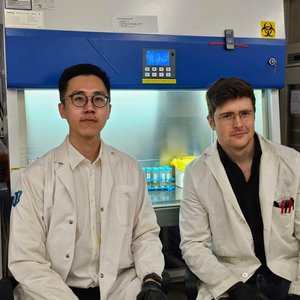A June report published by the Environmental Justice Foundation painted a negative view of shrimp farming while failing to recognize
the industry’s ongoing improvements in farming practices and management, says the Global Aquaculture Alliance (GAA).
While the Global Aquaculture Alliance recognizes past abuses and works collaboratively with groups like EJF to further improve global shrimp-farming practices, it disputes several points in EJF’s “Smash & Grab” report.
“Up to 38% of global mangrove loss has been attributed to shrimp farming,” the report states. This figure was pulled out of context
from a study published in Bioscience in 2001 by Boston University’s Ivan Valiela and co-workers.
A number in the 4-10% range is more accurate, according to a 1999 Auburn University report by Laurence Massaut on “Mangrove Management and Shrimp Aquaculture” and a 1998 report in Scientific American by Jason Clay and Claude Boyd titled “Shrimp Aquaculture and the Environment.”
The EJF statement that the use of fishmeal as a feed ingredient places “additional pressure” on marine reserves is misleading. A 1994 paper by Garcia and Newton of the Food and Agriculture Organization of the United Nations categorized fishmeal stocks as neither overfished nor depleted.
Except for El Niño years, fishmeal production has been stable for the last two decades. At the 2002 Conference on Seafood Byproducts in Alaska, USA, Ronald Hardy estimated that fishmeal consumption by shrimp farming merely diverts 7.6% of fishmeal from its traditional use as an ingredient in pig and poultry feeds.
“Smash & Grab” also implies that the fish used to manufacture fishmeal would be more efficiently fed directly to people. It fails to mention that these small, boney, oily fish are generally considered unsuitable for human consumption.
To bolster its claim that many shrimp farms are unsustainable, the report states: “In Thailand, a production crash is estimated to have led to 45,000 ha of shrimp farms being abandoned in 1990. Consequently, around 90% of shrimp farmers lost their businesses.”
FAO statistics, however, indicate that Thailand’s production of farmed shrimp increased steadily from 93,496 tons in 1989 to 119,510 in 1990, and 162,051 in 1991. This region is now producing 300,000 tons per year and continues to grow.
The EJF report contains emotional photographs and stories about alleged human rights abuses. Many of the anecdotes were gathered in Bangladesh, a developing country with high population density, low income levels and limited law enforcement.
Shrimp farming is one of few income sources in Bangladesh’s poverty-stricken coastal communities. Jamuna Basu, a widow in Phaltita village in Bagerhat, said, “I could not survive with any honor if I did not do shrimp farming and earn enough for my own livelihood.”
In Bangladesh, aquaculture directly employs over 600,000 individuals and benefits 3.5 million, if their families are included. A critical
goal of the country’s new Seal of Quality Program for shrimp farming is regulation of child labor.
“Smash & Grab” overlooks many improvements in shrimp-farming practices. The practice of collecting postlarvae from the wild, for
example, has been eliminated in most regions. The switch to hatchery-reared postlarvae eliminates losses of other organisms captured with wild shrimp postlarvae and also increases returns for farmers through disease control, cost reduction and selective breeding.
The practice of relying on high rates of water exchange in ponds was radically reduced in the last decade from 10-30% per day to 0-5% per day in most locations. This reduction has direct environmental benefits in terms of lower organic enrichment of receiving water bodies.
Shrimp losses from viral epidemics that are harmless to humans are now avoidable through the use of sensitive diagnostic testing and improved farm management. Newly developed lines of shrimp are disease-free and disease-resistant.
Another promising industry development is the formation of Aquaculture Certification Council, Inc., which performs certifications of shrimp farms and processing plants for compliance with environmental, social and food safety standards. The program includes traceability and envisions the incorporation of feed mills and hatcheries in the future.
For additional information on how aquaculture is improving its practices and providing jobs while raising quality seafood for the world’s growing population, visit http://www.gaalliance.org or contact the Global Aquaculture Alliance office: Tel: +1-314-293-5500, E-mail gaa1@attglobal.net.
GAA is an international, nonprofit trade association dedicated to advancing environmentally and socially responsible aquaculture.










